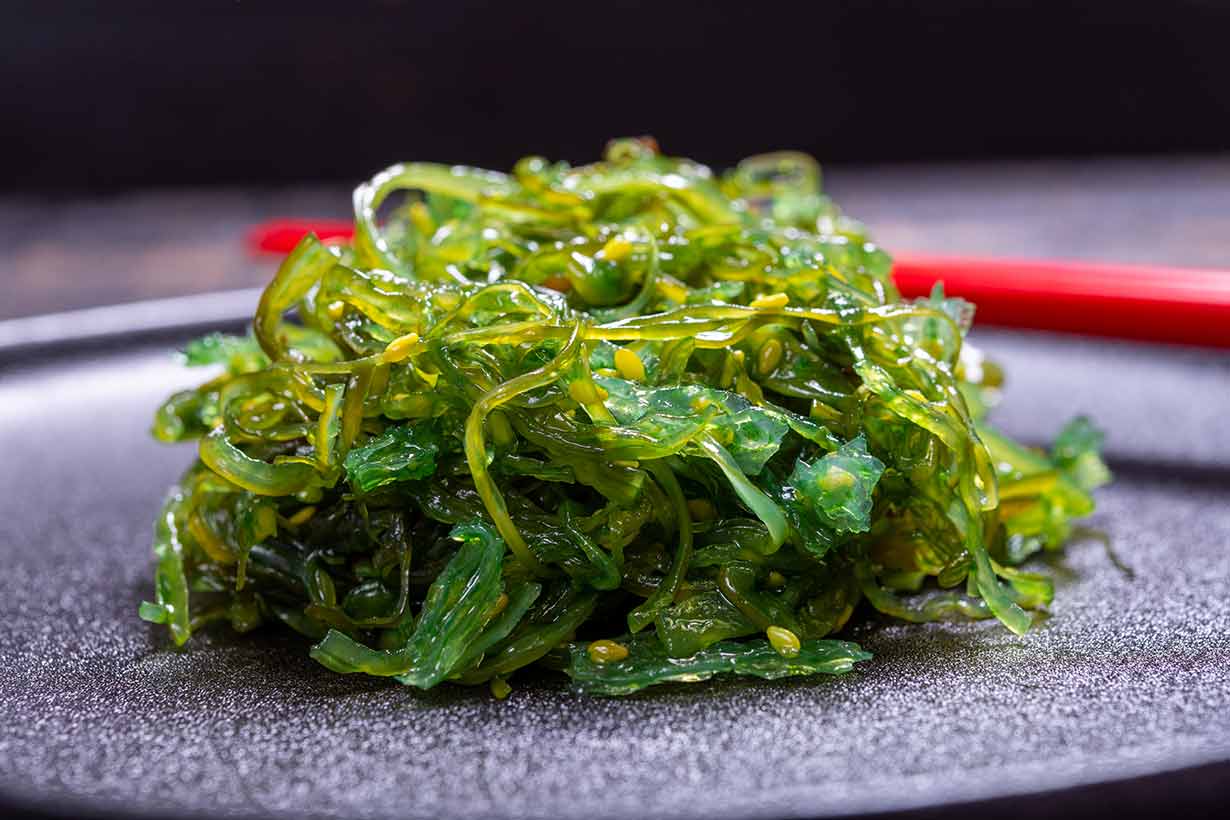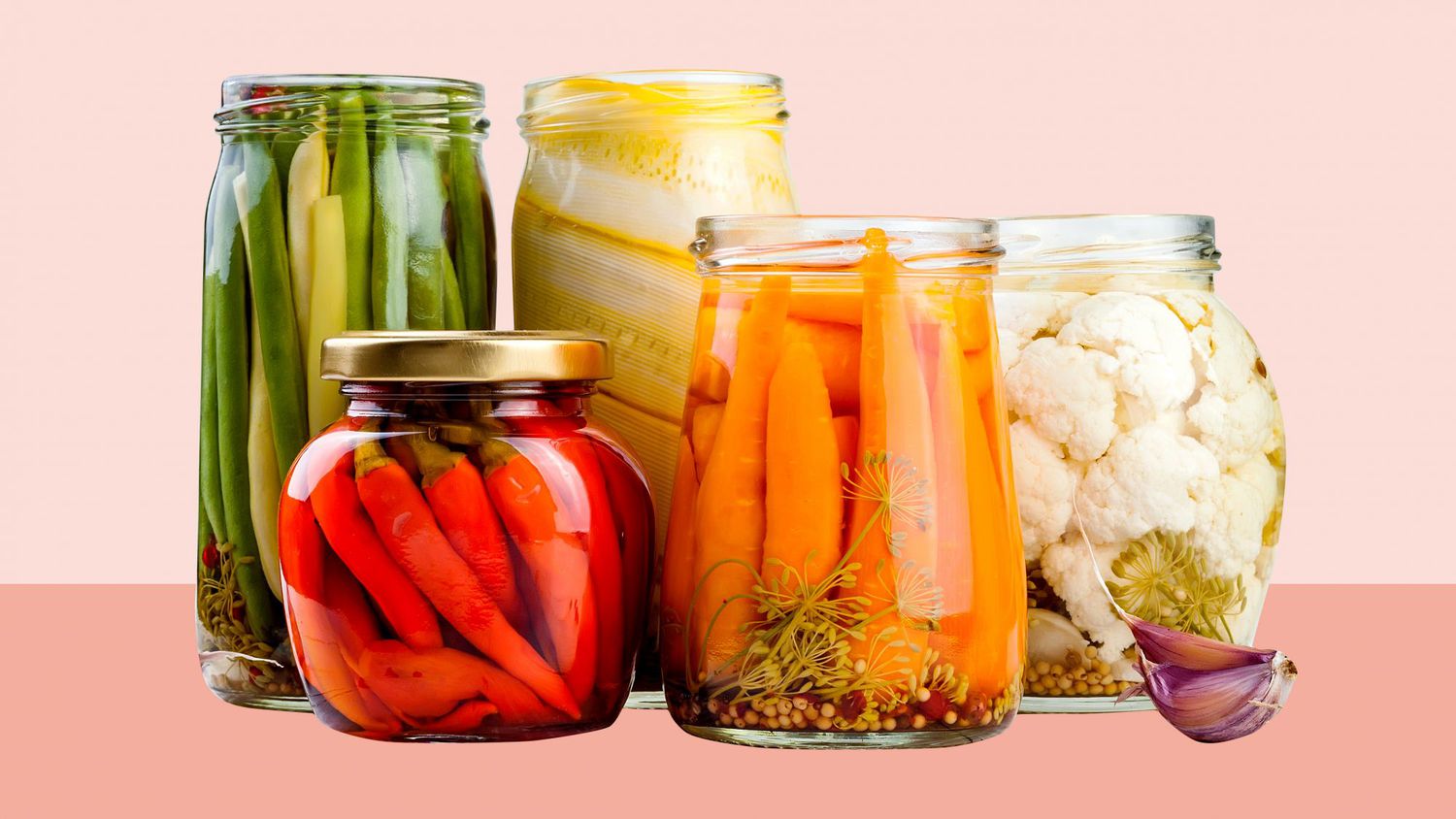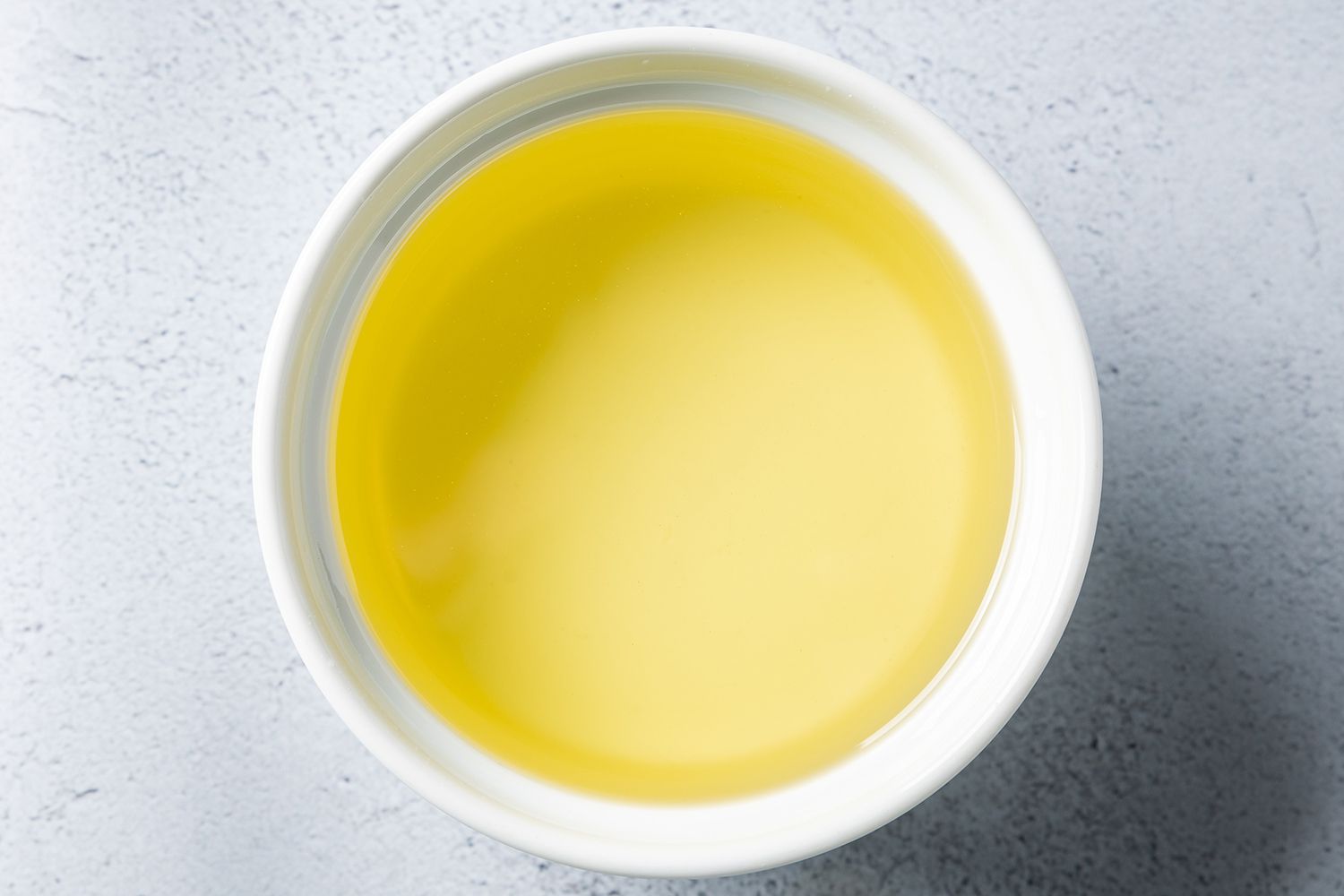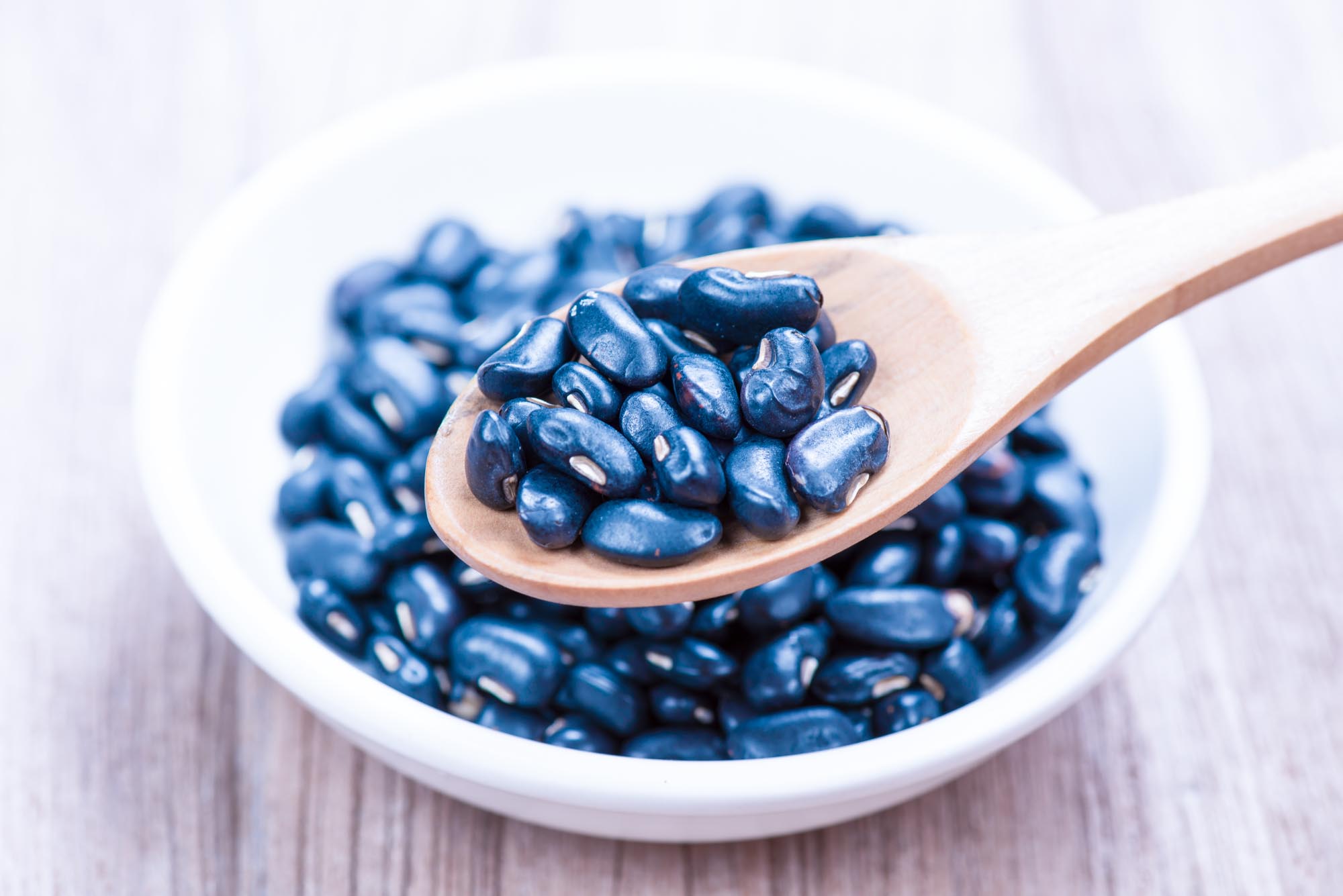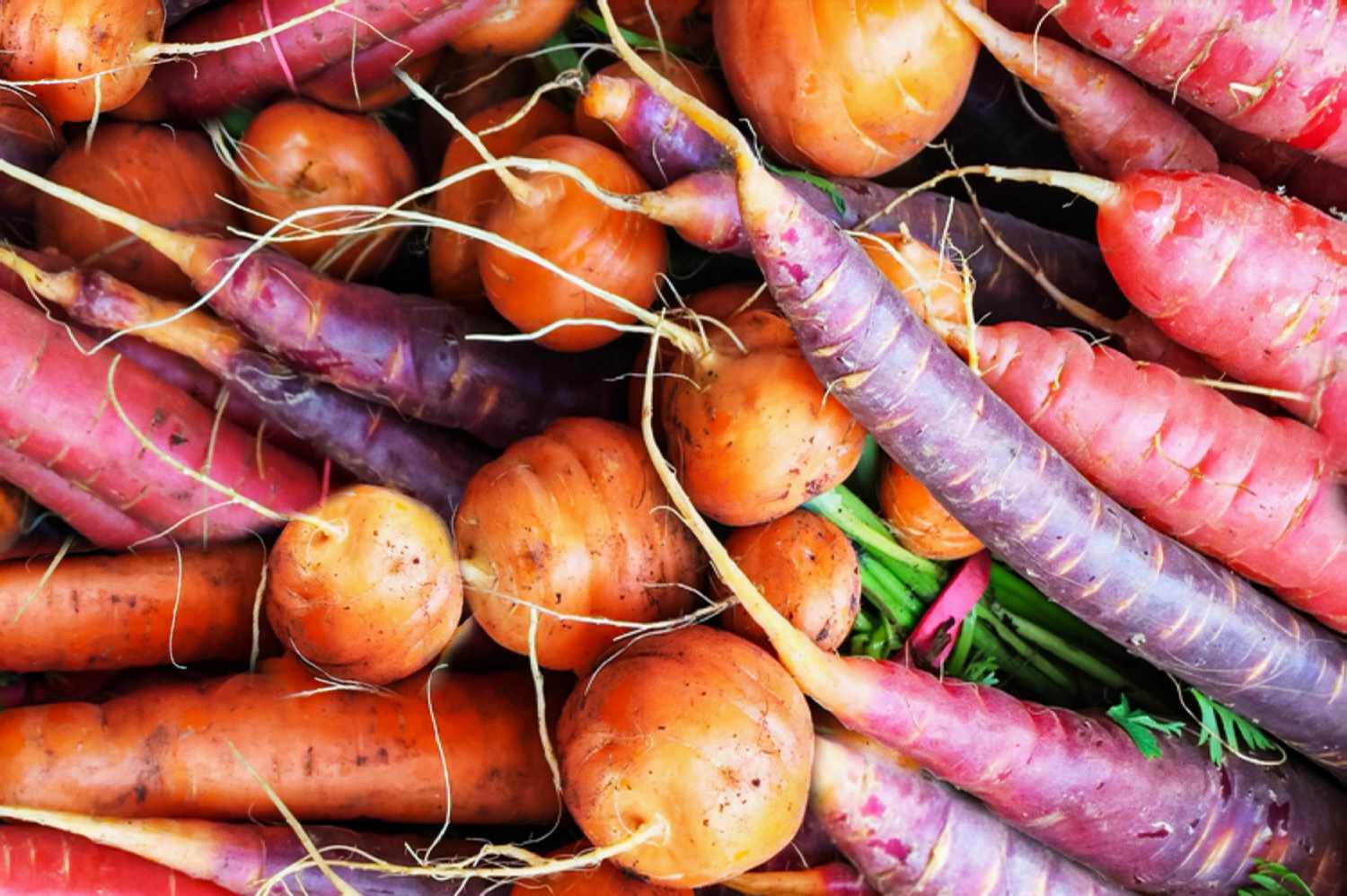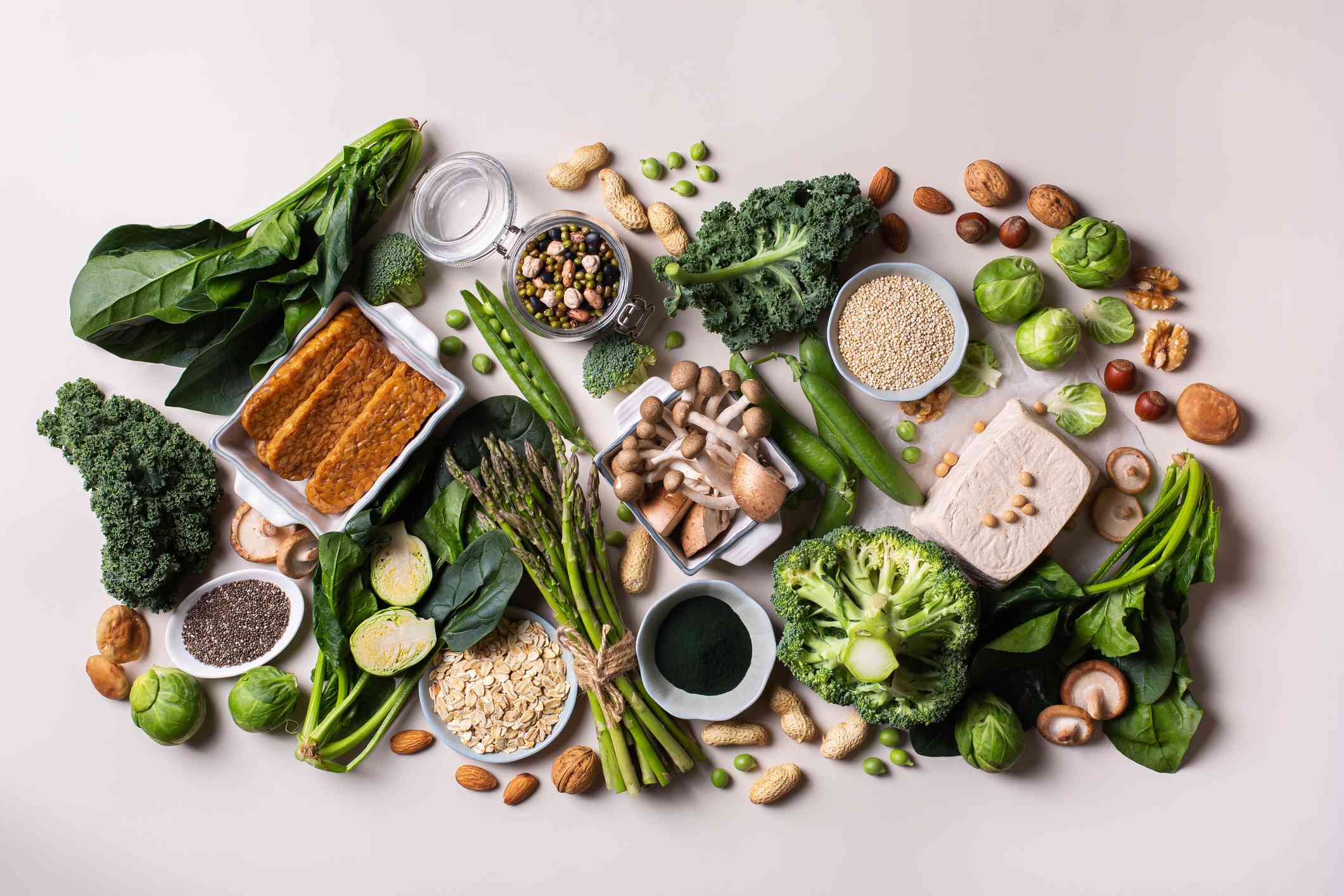Home>Types of Gardening>Edible Gardening>What Are Tuber Vegetables
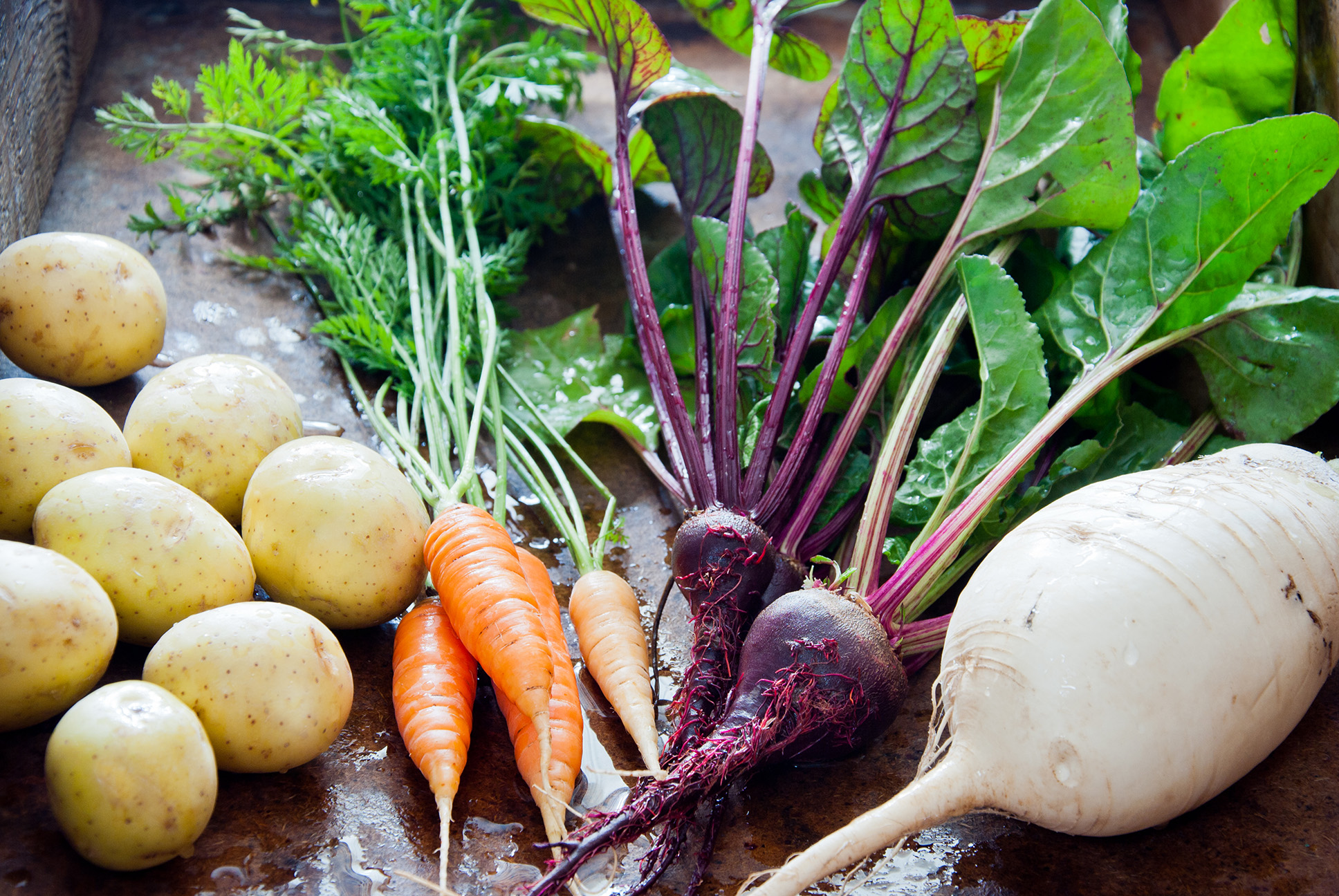

Edible Gardening
What Are Tuber Vegetables
Modified: February 10, 2024
Learn about tuber vegetables and their role in edible gardening. Discover how to grow and enjoy these nutritious and versatile crops in your own backyard.
(Many of the links in this article redirect to a specific reviewed product. Your purchase of these products through affiliate links helps to generate commission for Chicagolandgardening.com, at no extra cost. Learn more)
Table of Contents
Introduction
Welcome to the fascinating world of tuber vegetables! If you’re a fan of edible gardening, you’re in for a treat. Tuber vegetables are a diverse group of plants that have gained immense popularity among gardeners and food enthusiasts alike.
So, what exactly are tuber vegetables? In simple terms, tubers are swollen, underground plant structures that store nutrients to enable the plant to grow and survive through adverse conditions. These vegetables are not only delicious and nutritious but also offer a unique gardening experience.
From potatoes to sweet potatoes, yams to Jerusalem artichokes, and taro to cassava, tuber vegetables encompass a wide range of plant species. Each variety boasts its own distinctive characteristics, flavors, and culinary uses.
Whether you’re a seasoned gardener or a beginner, growing tuber vegetables can be a rewarding and enjoyable endeavor. Not only do they provide a bountiful harvest, but they also offer numerous health benefits and can be incorporated into a variety of dishes.
In this article, we will explore the world of tuber vegetables, learn about their nutritional value, culinary uses, health benefits, and discover tips and tricks for growing and harvesting these delightful plants. So, grab your gardening gloves and let’s dive into the exciting realm of tuber vegetables!
Definition of Tuber Vegetables
Tuber vegetables are a specific category of edible plants that store nutrients in underground structures called tubers. These tubers are modified stems or roots that have adapted to function as storage organs. The plants store their energy reserves, primarily in the form of starch, within these tubers, allowing them to survive during adverse conditions such as winter or drought.
The tubers of these vegetables are typically swollen and fleshy, with a protective outer layer known as the skin. Inside, they contain a starchy flesh that is rich in carbohydrates, vitamins, minerals, and other essential nutrients. The shape, size, and texture of tuber vegetables can vary widely, depending on the specific plant species.
One of the most well-known tuber vegetables is the potato. Potatoes belong to the Solanaceae family and are grown worldwide for their edible tubers. Other common tuber vegetables include sweet potatoes, yams, Jerusalem artichokes, taro, and cassava. Each of these vegetables has its own distinct characteristics and culinary uses.
What sets tuber vegetables apart from other types of root vegetables, such as carrots or radishes, is their ability to sprout and grow new plants. The eyes or buds that develop on the surface of the tuber can be used to propagate the plant and produce new crops.
It’s important to note that not all plants with underground structures are considered tuber vegetables. For example, bulbs, such as onions and garlic, and rhizomes, such as ginger and turmeric, are different types of modified plant structures that store nutrients but are not classified as tubers.
Now that we have a clear understanding of what tuber vegetables are, let’s explore some of the popular examples and discover their nutritional value and culinary uses!
Examples of Tuber Vegetables
Tuber vegetables comprise a diverse range of plant species, each with its own unique characteristics and culinary uses. Here are some of the most popular examples of tuber vegetables:
- Potatoes: Potatoes are perhaps the most well-known and widely consumed tuber vegetables. They come in various colors, shapes, and sizes, including russet, red, yellow, and purple. Potatoes are incredibly versatile and can be boiled, baked, fried, mashed, or roasted.
- Sweet Potatoes: Sweet potatoes have a vibrant orange flesh and a sweet, nutty flavor. They are packed with nutrients, including high levels of vitamin A, vitamin C, and fiber. Sweet potatoes can be baked, roasted, mashed, or even used in sweet treats like pies and muffins.
- Yams: Yams are starchy tuber vegetables that are native to Africa and Asia. They have a rough, bark-like skin and a sweet, moist flesh. Yams are traditionally used in savory dishes like stews and soups but are also delicious when roasted or mashed.
- Jerusalem Artichokes: Despite their name, Jerusalem artichokes have no relation to the artichoke plant. These tubers, also known as sunchokes, have a nutty, slightly sweet flavor and a crisp texture. They can be eaten raw in salads, sautéed, roasted, or even cooked into soups and purees.
- Taro: Taro is a tropical tuber vegetable widely used in Asian and Pacific Island cuisines. It has a starchy, creamy white flesh and a unique earthy flavor. Taro can be boiled, steamed, fried, mashed, or used in desserts like taro bubble tea.
- Cassava: Cassava, also known as yuca, is a staple food in many tropical regions. The tuber has a tough, brown skin and a white, starchy flesh. Cassava can be boiled, fried, or made into flour for baking. It is a valuable source of carbohydrates and can be used in a variety of dishes.
These are just a few examples of the wide variety of tuber vegetables available. Each of these vegetables brings its own unique flavors and textures to the table, making them a delightful addition to any culinary creation.
Nutritional Value of Tuber Vegetables
Tuber vegetables not only offer a delicious taste but also pack a nutritional punch. These underground wonders are rich in essential vitamins, minerals, and dietary fiber. Let’s explore the nutritional value of tuber vegetables:
Carbohydrates: Tuber vegetables are an excellent source of complex carbohydrates, which provide a steady release of energy. The high carbohydrate content in tuber vegetables makes them a satisfying and filling food choice.
Fiber: Tuber vegetables are a good source of dietary fiber, which aids in digestion and promotes a healthy gut. Fiber helps regulate blood sugar levels, lowers cholesterol, and supports weight management.
Vitamins: Tuber vegetables are loaded with vitamins, including vitamin A, vitamin C, and various B vitamins. Vitamin A is essential for healthy vision, while vitamin C boosts the immune system and supports collagen production. B vitamins play a crucial role in energy metabolism and nervous system health.
Minerals: Tuber vegetables contain an array of minerals that are vital for overall health. Potassium helps maintain healthy blood pressure levels, while magnesium is essential for muscle and nerve function. Other minerals found in tuber vegetables include iron, calcium, and zinc.
Antioxidants: Many tuber vegetables are packed with antioxidants that help protect our bodies from damage caused by harmful free radicals. These antioxidants have been linked to a reduced risk of chronic diseases such as heart disease and certain types of cancer.
It’s important to note that the specific nutrient content may vary depending on the type of tuber vegetable. For instance, sweet potatoes are known for their high vitamin A content, while potatoes are a good source of vitamin C and potassium.
Incorporating a variety of tuber vegetables into your diet can provide a nutritious boost and contribute to a well-rounded, balanced eating plan.
Now that we understand the nutritional value of tuber vegetables, let’s dive into their culinary uses and explore the delectable dishes that can be created with these versatile veggies.
Culinary Uses of Tuber Vegetables
Tuber vegetables offer a wide range of culinary possibilities, thanks to their versatility in flavor and texture. From savory to sweet dishes, these underground gems can be incorporated into numerous recipes. Let’s explore the diverse culinary uses of tuber vegetables:
Boiled: Boiling tuber vegetables, such as potatoes and sweet potatoes, is a simple yet delicious way to enjoy them. Boiled tubers can be used as a side dish or added to soups, stews, and salads. The softened texture and enhanced flavor make them a delightful addition to any meal.
Baked or Roasted: Baking or roasting tuber vegetables brings out their natural sweetness and creates a crispy exterior. From classic roasted potatoes to crispy sweet potato fries, the possibilities are endless. Season them with herbs, spices, or a drizzle of olive oil for an extra burst of flavor.
Mashed: Mashing tuber vegetables, such as potatoes or taro, is a popular method to create creamy and comforting dishes. Add butter, milk, or plant-based alternatives for a rich and smooth consistency. Mashed tubers can be served as a side dish or used as a base for shepherd’s pie or other casseroles.
Fried: Who can resist the temptations of crispy, fried tuber vegetables? Whether it’s French fries, potato chips, or sweet potato tempura, frying brings out a delectable crunch and enhances the flavors. Keep in mind to enjoy these indulgent treats in moderation.
Pureed: Pureeing tuber vegetables opens up a world of possibilities for creamy soups, sauces, and spreads. Sweet potato puree makes a fantastic addition to baked goods, while taro puree can be used in desserts like ice cream or mousse.
Grated: Grating tuber vegetables, such as potatoes or cassava, allows for a variety of dishes. Enjoy crispy potato latkes or cassava fritters. Grated tubers can also be used as a base for gluten-free pizza crusts or as a binder in veggie burgers.
Sweet Treats: Don’t forget about the wonderful world of sweet tuber vegetable dishes. From sweet potato pie and yam cakes to taro bubble tea or cassava cake, these vegetables can be transformed into delicious desserts that satisfy your sweet tooth.
These are just a few examples of the culinary uses of tuber vegetables. Feel free to experiment and get creative in the kitchen. The flavors and textures of tuber vegetables lend themselves to a wide variety of recipes, making them a delightful addition to any meal.
Next, let’s explore the health benefits associated with consuming tuber vegetables.
Health Benefits of Tuber Vegetables
Tuber vegetables not only tantalize our taste buds but also offer a range of health benefits. Packed with essential nutrients and bioactive compounds, these vegetables can contribute to a well-rounded and nourishing diet. Let’s delve into the health benefits of tuber vegetables:
Rich in Fiber: Tuber vegetables, such as sweet potatoes, yams, and Jerusalem artichokes, are excellent sources of dietary fiber. Fiber aids in digestion, helps regulate blood sugar levels, and promotes a healthy gut. It can also contribute to weight management by increasing feelings of fullness and reducing calorie intake.
Antioxidant Properties: Many tuber vegetables are rich in antioxidants, such as beta-carotene, vitamin C, and various phytochemicals. These antioxidants help protect our cells from damage caused by harmful free radicals. They have been associated with a reduced risk of chronic diseases, such as heart disease, certain types of cancer, and age-related macular degeneration.
Nutrient-Dense: Tuber vegetables are packed with essential vitamins and minerals. Sweet potatoes, for example, are a great source of vitamin A, which is crucial for eye health and immune function. Potatoes and taro are rich in vitamin C, an antioxidant that boosts the immune system and supports collagen production. Additionally, tuber vegetables provide minerals like potassium, magnesium, and iron, which support various bodily functions.
Healthy Carbohydrates: While tuber vegetables are starchy, they offer a healthier alternative to refined grains. These complex carbohydrates provide a source of sustained energy and are digested more slowly, helping to keep blood sugar levels stable. They are also a good source of prebiotic fibers that nourish beneficial gut bacteria, promoting gut health.
Low in Fat and Calories: Tuber vegetables are naturally low in fat and calories, making them a great choice for maintaining a healthy weight. They can be a satisfying and filling addition to meals, allowing you to cut back on higher-calorie options without sacrificing flavor or nutrition.
It’s important to note that the health benefits of tuber vegetables can vary depending on the specific vegetable and how it is prepared. Cooking methods can influence nutrient availability, so it’s best to opt for healthier cooking methods like steaming, baking, or grilling to retain maximum nutrients.
Incorporating tuber vegetables into your diet can provide a variety of health benefits and add a colorful and flavorful dimension to your meals. So, don’t hesitate to explore and experiment with these nutritious delights.
Next, let’s discover how to successfully grow and harvest tuber vegetables in your own edible garden.
Growing and Harvesting Tuber Vegetables
Growing tuber vegetables in your own garden can be a rewarding and fulfilling experience. With the right techniques and care, you can enjoy a bountiful harvest of these nutritious and delicious vegetables. Here are some tips for successfully growing and harvesting tuber vegetables:
Start with Good Soil: Tuber vegetables thrive in well-drained, loose, and fertile soil. Prepare the planting area by incorporating organic matter, such as compost, to improve soil structure and provide essential nutrients.
Choose the Right Location: Most tuber vegetables prefer full sun, so select a sunny spot in your garden for planting. Adequate sunlight ensures proper growth and development of tubers.
Planting and Spacing: Depending on the specific vegetable, tubers can be planted by sowing seeds, transplanting seedlings, or using tuber pieces known as seed potatoes. Follow the recommended planting depth and spacing guidelines for each vegetable to allow for proper root and tuber development.
Watering: Tuber vegetables require consistent and adequate moisture, especially during their growing stage. Water the plants regularly but be cautious not to overwater, as it can lead to rotting of tubers. Ensure that the soil remains evenly moist but not waterlogged.
Fertilization: Incorporate a balanced organic fertilizer before planting, and supplement with additional fertilizers during the growing season, following package instructions. This will provide the necessary nutrients for robust plant growth and tuber formation.
Weed Control: Regularly remove weeds around the tuber plants to reduce competition for nutrients and water. Mulching can also help suppress weed growth and maintain soil moisture.
Support and Care: Some varieties of tuber vegetables, like tomatoes or climbing potatoes, may require support structures like trellises or cages to keep the plants upright. Monitor the plants for any signs of pests or diseases and take appropriate measures to control them.
Harvesting: The time for harvesting tubers varies depending on the vegetable and growing conditions. Generally, tubers are ready for harvest when the leaves begin to yellow and die back. Carefully dig up the tubers using a garden fork or shovel, being mindful not to damage them. Brush off excess soil and allow the tubers to cure in a cool, dry, and dark place for a few days before storing or using.
By following these guidelines and tending to your tuber vegetables with care, you can enjoy a successful harvest of these delightful and nutritious plants.
Now that you have the knowledge to grow and harvest tuber vegetables, let’s explore some popular varieties that you can consider adding to your garden.
Popular Varieties of Tuber Vegetables
When it comes to tuber vegetables, there is a fantastic array of popular varieties to choose from. Each variety boasts its own unique flavors, textures, and culinary uses. Here are some of the popular tuber vegetables that you might consider adding to your edible garden:
- Potatoes (Solanum tuberosum): There are numerous potato varieties, including Russet, Yukon Gold, Red Bliss, and Fingerling. These delicious tubers come in various sizes, shapes, and colors, offering a wide range of culinary possibilities.
- Sweet Potatoes (Ipomoea batatas): Sweet potatoes are available in various colors like orange, purple, and white. Popular varieties include Beauregard, Covington, and Garnet. Their sweet and creamy flesh make them a versatile choice for both savory and sweet dishes.
- Yams (Dioscorea spp.): Yams are native to tropical regions and are widely consumed in many cultures. Varieties include White Yam, Yellow Yam, and Water Yam. These starchy tubers have a rough exterior and a sweet and moist flesh.
- Jerusalem Artichokes (Helianthus tuberosus): Also known as sunchokes, Jerusalem artichokes have a nutty, sweet flavor and a crisp texture. The most common variety is the Fuseau. They can be used in salads, roasted, or even pickled.
- Taro (Colocasia esculenta): Taro is a popular tuber vegetable in Asian and Pacific Island cuisines. Varieties include Bun-long, Eddo, and Edo-imo. This starchy tuber has a distinctive nutty and earthy flavor. It can be boiled, steamed, fried, or used in desserts.
- Cassava (Manihot esculenta): Cassava, also known as yuca, is a staple crop in many tropical regions. Varieties include Brazilian Arrowroot, Mogo, and Jewel. Cassava tubers have a dense, starchy flesh and are commonly used to make flour, chips, and various traditional dishes.
These are just a few examples of the popular tuber vegetables that can thrive in your garden. Explore different varieties and choose ones that suit your taste preferences, climate, and growing conditions.
Remember to source tuber vegetables from reputable sources, including nurseries or online suppliers, to ensure you’re getting healthy and disease-free plants. Happy gardening!
Conclusion
Tuber vegetables offer a world of culinary delights and gardening opportunities. From the humble potato to the vibrant sweet potato, the earthy taro to the versatile yam, tubers provide us with a diverse range of flavors, textures, and nutritional benefits.
By incorporating tuber vegetables into our diets, we can enjoy their rich array of essential vitamins, minerals, and dietary fiber. These nutrient powerhouses contribute to our overall well-being and can support a balanced and healthy lifestyle.
When it comes to growing tuber vegetables, proper care and attention to soil quality, sunlight, watering, and maintenance can yield a satisfying harvest. Whether you have a spacious garden or a small balcony, tuber vegetables can be cultivated successfully with the right techniques.
Additionally, the culinary uses of tuber vegetables are endless. From boiling and baking to mashing and frying, these versatile vegetables can be transformed into an array of appetizing dishes. Explore traditional recipes and get creative in the kitchen with these marvelous ingredients.
So, whether you’re a seasoned gardener or a novice in the world of edible gardening, tuber vegetables are an exciting and rewarding addition to your repertoire. Their diverse flavors, nutritional benefits, and versatility make them an excellent choice for both gardening enthusiasts and food lovers.
Embark on the journey of growing, harvesting, and savoring the delightful tuber vegetables that nature has to offer. With proper care, creativity, and a dash of enthusiasm, you can enjoy the joys of homegrown tuber vegetables and their delectable flavors.
Start your edible garden, experiment with different tuber vegetable varieties, and relish the savory and sweet dishes that these amazing vegetables can bring to your table. Happy gardening and bon appétit!

